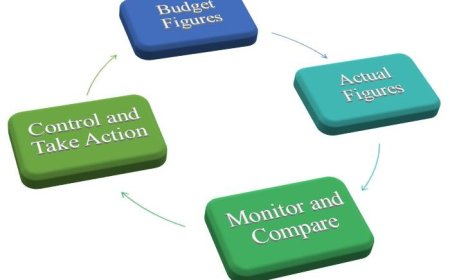Online and Hybrid Learning: Transforming Education in the Digital Age
Explore how online and hybrid learning models are reshaping education by providing flexible, accessible, and customized learning experiences that cater to diverse student needs and lifestyles.

Introduction
The rapid advancement of technology and the growing ubiquity of the internet have revolutionized the educational landscape, giving rise to online and hybrid learning models. Online learning refers to a fully digital education format, while hybrid learning combines traditional face-to-face instruction with online components. These approaches have gained prominence, especially in recent years, as they provide flexible, accessible, and customizable learning experiences. This essay explores the concepts of online and hybrid learning, their advantages and challenges, best practices for implementation, and the implications for the future of education.
As we delve deeper into the realm of online learning, it becomes evident that this model offers unparalleled flexibility. Learners can engage with course materials at their own pace, allowing for a more personalized educational experience. This adaptability caters to diverse learning styles and schedules, making education more inclusive. Additionally, the vast array of digital resources available—ranging from interactive simulations to multimedia presentations—enriches the learning experience and fosters a deeper understanding of complex subjects.
Hybrid learning, on the other hand, seeks to merge the best of both worlds. By integrating in-person interactions with online coursework, this model not only maintains the social aspect of education but also leverages technology to enhance learning outcomes. Students can benefit from real-time discussions and collaborative projects while simultaneously accessing a wealth of online resources. This synergy can lead to improved retention rates and greater student engagement.
Despite these advantages, both online and hybrid learning models present unique challenges. Issues such as digital equity, where disparities in access to technology can hinder learning opportunities, must be addressed. Furthermore, educators face the ongoing challenge of maintaining student motivation and fostering a sense of community in a predominantly virtual environment. Effective communication and the use of innovative teaching strategies are essential to overcoming these hurdles.
Best practices for implementing online and hybrid learning include prioritizing clear communication, utilizing diverse instructional methods, and providing robust support systems for both students and educators. Continuous professional development for instructors is vital to ensure they are equipped with the skills necessary to navigate this evolving educational landscape.
Looking ahead, the implications of online and hybrid learning are profound. As technology continues to advance, the potential for personalized and adaptive learning experiences will only grow. Educational institutions must embrace these models not merely as temporary solutions but as integral components of a future-focused educational framework that prepares learners for an increasingly complex world. In this dynamic environment, the goal remains clear: to cultivate an inclusive, engaging, and effective learning experience for all students.
Understanding Online Learning
Online learning, also known as e-learning or distance education, utilizes digital platforms to deliver educational content and facilitate interaction between instructors and students. Key characteristics of online learning include:
Accessibility: Learners can access materials, resources, and lectures from anywhere in the world, eliminating geographical barriers. This democratization of education allows students from diverse backgrounds to participate in courses that may have previously been out of reach due to location or financial constraints. As a result, online learning fosters a global classroom environment where ideas and perspectives can flow freely across borders.
Flexibility: Students can choose when and where to study, enabling them to tailor their learning schedules around personal and professional commitments. This flexibility is particularly beneficial for working professionals or those with family responsibilities, as it allows them to balance their educational pursuits with other aspects of their lives. The ability to pause and resume learning at one’s convenience can lead to increased motivation and a more personalized educational experience.
Variety of Formats: Online courses can take many forms, including video lectures, interactive simulations, discussion forums, and quizzes, catering to diverse learning preferences. This variety not only keeps students engaged but also allows instructors to employ different pedagogical strategies to enhance comprehension and retention. For instance, visual learners may benefit from infographics and videos, while auditory learners might prefer podcasts and recorded discussions. By accommodating multiple learning styles, online education can optimize the learning process for a broader audience.
Self-Paced Learning: Many online courses allow students to learn at their own pace, providing opportunities for deeper engagement and understanding of complex topics. This self-directed approach empowers learners to delve into subjects that pique their interest, revisit challenging concepts, and master the material without the pressure of a traditional classroom setting. Additionally, this individualized pace can lead to improved outcomes, as students can allocate more time to areas where they may need additional support.
Online learning represents a transformative shift in education, characterized by its accessibility, flexibility, diverse formats, and self-paced nature. As technology continues to evolve, the potential for online learning to enhance educational experiences and outcomes will only grow. Institutions and educators must remain adaptable and innovative, ensuring that they harness the full capabilities of digital platforms to create enriching learning environments that meet the needs of all students.
The Emergence of Hybrid Learning
Hybrid learning, also referred to as blended learning, merges traditional classroom experiences with online instruction. This approach offers a structured yet flexible learning environment where students engage with content both in-person and digitally. Hybrid learning typically involves:
Face-to-Face Instruction: Scheduled classroom sessions that facilitate direct interaction between students and instructors. This personal engagement fosters a sense of community and enhances the learning experience, enabling immediate feedback and support. Instructors can gauge student comprehension in real-time, address questions, and create dynamic discussions that enrich the educational process.
Digital Learning Components: Online activities such as pre-recorded lectures, digital discussions, and assignments complementing in-person sessions. These components allow students to learn at their own pace, providing opportunities for deeper exploration of topics. The integration of multimedia resources—such as videos, podcasts, and interactive simulations—ensures that diverse learning styles are accommodated. This flexibility empowers students to take ownership of their learning journey, reinforcing concepts introduced during face-to-face classes.
Flipped Classroom: A model where students learn new material online at home and engage in interactive discussions and activities during in-person class time. This pedagogical shift transforms the traditional learning dynamic, as students arrive prepared to delve into complex topics, collaborate on projects, and apply their knowledge in practical scenarios. The flipped classroom model encourages critical thinking and fosters a more active learning environment, where students are not merely passive recipients of information but engaged participants in their education.
As hybrid learning continues to evolve, it is essential to recognize its potential to bridge educational gaps and enhance accessibility. By combining the strengths of both in-person and online modalities, institutions can cater to diverse learner needs, accommodating various schedules and learning preferences. Moreover, hybrid learning promotes the development of essential skills such as digital literacy, self-regulation, and adaptability—qualities that are increasingly vital in today’s rapidly changing world.
The emergence of hybrid learning represents a significant shift in educational paradigms. By leveraging technology alongside traditional teaching methods, educators can create enriched learning experiences that prepare students for future challenges. As this innovative approach gains traction, it is poised to redefine the landscape of education, making learning more inclusive, engaging, and effective for all.
Advantages of Online and Hybrid Learning
-
Flexibility and Convenience One of the most notable benefits of online and hybrid learning is the flexibility it offers. Students can access materials and participate in courses at their convenience, accommodating various lifestyles, work schedules, and familial obligations. This flexibility supports a diverse range of learners, including working professionals, parents, and those with limited mobility. As a result, education becomes more inclusive, allowing individuals to pursue their academic goals without the constraints of traditional classroom settings.
-
Increased Access to Resources Online learning platforms often provide extensive resources, including multimedia materials, interactive tools, and supplementary content, enhancing the learning experience. Students can access a wealth of information and alternative perspectives beyond traditional textbooks, catering to different learning styles and preferences. This access empowers students to engage deeply with the subject matter, fostering a more enriching educational journey.
-
Personalized Learning Experience Hybrid learning allows educators to tailor instruction to students' individual needs, preferences, and progress. Assessments can be conducted through online quizzes and discussions, enabling instructors to identify areas where students may require additional support. This personalized approach not only enhances comprehension but also promotes a sense of ownership over one's learning path, encouraging students to take initiative and responsibility for their educational outcomes.
-
Collaborative Learning Opportunities Both online and hybrid learning encourage collaboration among students through discussion forums, group projects, and peer-to-peer interactions. This fosters a sense of community and engagement, encouraging students to share ideas, insights, and feedback. Such collaborative environments not only enhance critical thinking and problem-solving skills but also prepare students for the teamwork and communication demands of the modern workplace.
-
Cost-Effective Solutions Online and hybrid learning can reduce the costs associated with traditional education, such as transportation and housing. Moreover, institutions can decrease physical infrastructure and maintenance costs, translating to potential savings for students. These cost-effective solutions make higher education more attainable for a broader audience, promoting lifelong learning and professional development across various demographics.
-
Global Networking Opportunities Online and hybrid learning environments often attract a diverse student body from different geographical locations. This diversity allows learners to connect with peers and professionals around the globe, broadening their perspectives and fostering valuable networking opportunities. Such connections can lead to collaborations, internships, and job opportunities, enhancing students’ career prospects in an increasingly interconnected world.
Online and hybrid learning not only provides flexibility and access to resources but also personalizes education, fosters collaboration, and offers cost-effective solutions while creating global networking opportunities. As educational landscapes continue to evolve, these advantages position online and hybrid learning as a vital component of modern education.
Challenges of Online and Hybrid Learning
-
Technology Dependence Online and hybrid learning relies heavily on technology, necessitating access to reliable internet and devices. Inadequate technology can hinder learning opportunities, particularly for economically disadvantaged students. This digital divide not only exacerbates existing inequalities but also creates a barrier to equitable education. Furthermore, technical issues such as outages or platform malfunctions can disrupt the educational process, leaving students and educators scrambling for solutions. Institutions must invest in robust technological infrastructure and provide support systems to mitigate these challenges, ensuring that all students have the tools they need to succeed.
-
Limited Social Interaction While online learning fosters collaboration through digital platforms, it may not fully replicate the social interactions found in traditional classroom settings. This lack of face-to-face engagement can lead to feelings of isolation among students, potentially impacting their motivation and engagement. The absence of spontaneous conversations and non-verbal cues can hinder relationship-building and diminish the sense of community that is often vital for effective learning. Educators must find innovative ways to cultivate connections among students, such as virtual study groups or interactive online forums, to foster a sense of belonging and enhance the overall learning experience.
-
Self-Discipline and Time Management Online and hybrid learning requires a high degree of self-motivation and effective time management skills. Students must be proactive in completing assignments and participating in discussions, which can be particularly challenging for those accustomed to structured classroom environments. The flexibility of online learning, while beneficial, can also lead to procrastination and disorganization. To address these issues, institutions should provide resources and training on self-regulation strategies, helping students develop essential skills that will serve them well beyond their academic pursuits.
-
Assessment Challenges Evaluating student performance in online and hybrid formats can present difficulties. Issues such as academic dishonesty, discrepancies in grading, and the need for robust assessment tools must be addressed to ensure the credibility and integrity of online courses. Traditional assessment methods may not translate effectively to digital platforms, necessitating the development of innovative evaluation techniques that accurately reflect student learning. Institutions must prioritize the creation of comprehensive assessment frameworks that incorporate diverse evaluation methods, such as project-based assessments and peer reviews, to provide a more holistic view of student performance.
While online and hybrid learning offers numerous advantages, it is essential to acknowledge and address the inherent challenges. By investing in technology, fostering social connections, promoting self-discipline, and refining assessment methods, educational institutions can create a more equitable and effective learning environment for all students.
Best Practices for Effective Online and Hybrid Learning
Engaging Content Delivery: Educators should utilize a diverse array of multimedia resources, including videos, podcasts, infographics, and interactive simulations, to create a dynamic learning environment. Incorporating real-world examples and case studies not only enriches the content but also allows students to see the practical application of theoretical concepts. Gamification techniques, such as quizzes with rewards or leaderboard systems, can further enhance engagement by fostering a sense of competition and achievement among students.
Regular Communication: Maintaining consistent communication is vital for student success in online and hybrid environments. Instructors should establish a routine of regular check-ins through emails, discussion forums, and virtual office hours. This proactive approach not only provides students with valuable feedback but also cultivates a sense of community. Encouraging peer-to-peer interaction through group projects and discussion boards can enhance collaborative learning, allowing students to learn from one another and build essential teamwork skills.
Clear Expectations: Clearly outlining course objectives, deadlines, and assessment criteria is paramount for student success. A well-structured syllabus, complete with a timeline of assignments and expectations for participation, can serve as a roadmap for students. Additionally, providing rubrics for assessments helps students understand how their work will be evaluated, promoting transparency and accountability. Regular reminders and updates about upcoming deadlines can further aid in keeping students organized and focused.
Utilizing Technology: Institutions must invest in user-friendly learning management systems (LMS) that facilitate seamless interaction between educators and students. Providing comprehensive technical support ensures that both parties can effectively navigate the digital learning landscape. Training sessions for faculty on utilizing various technological tools can enhance instructional delivery and encourage innovative teaching practices. Moreover, integrating tools such as virtual breakout rooms and collaborative platforms can foster a more interactive and engaging learning experience.
Regular Assessments: Implementing formative assessments throughout the course allows educators to monitor student progress effectively. These assessments, which can include quizzes, polls, and reflective journals, provide timely insights into student understanding and engagement. By addressing challenges promptly and customizing support based on assessment outcomes, instructors can ensure that all students receive the guidance they need to succeed. This adaptive approach not only enhances learning outcomes but also empowers students to take ownership of their educational journey.
By adhering to these best practices, educators can create a more effective and enriching online and hybrid learning experience, ultimately leading to greater student success and satisfaction.
The Future of Online and Hybrid Learning
The COVID-19 pandemic accelerated the adoption of online and hybrid learning globally, highlighting the potential for these models to reshape education. As institutions continue to refine their strategies, the future of online and hybrid learning will likely involve:
Integration of Advanced Technologies: Artificial intelligence, virtual reality (VR), and augmented reality (AR) will play a significant role in creating immersive learning experiences, facilitating simulations, and personalizing education. AI-driven platforms will analyze student performance in real-time, providing tailored resources and feedback that cater to individual learning styles. Meanwhile, VR and AR will transport students into interactive environments, enabling them to explore historical sites, conduct virtual science experiments, or practice complex skills in a risk-free setting.
Global Learning Communities: The interconnectedness of the digital world will allow students from diverse backgrounds to collaborate and learn together, fostering cross-cultural understanding and knowledge-sharing. Online platforms will serve as bridges, connecting learners from different continents to work on shared projects, participate in discussions, and gain insights from varied perspectives. This global approach will not only enrich the educational experience but also prepare students for an increasingly interconnected workforce.
Continuous Professional Development: Educators will require ongoing training in emerging technologies and innovative instructional strategies to effectively engage students in an evolving educational landscape. Institutions will need to invest in professional development programs that equip educators with the skills to utilize new tools and adapt their teaching methodologies. This commitment to lifelong learning among educators will be essential in maintaining high standards of education and ensuring that teaching practices remain relevant and impactful.
Policy Innovation: Educational institutions will need to adapt policies and frameworks to ensure data privacy, equitable access, and the sustainability of online and hybrid programs. Policymakers must prioritize the development of comprehensive guidelines that address the ethical use of technology in education, ensuring that student data is protected while also promoting inclusivity. By establishing standards for equitable access to technology and resources, institutions can help bridge the digital divide, ensuring that all students have the opportunity to thrive in a hybrid learning environment.
As we look to the future, the evolution of online and hybrid learning will be marked by a commitment to innovation, collaboration, and inclusivity. By embracing advanced technologies, fostering global learning communities, investing in professional development, and implementing robust policies, educational institutions can create a dynamic and resilient learning ecosystem that prepares students for the challenges of tomorrow.
Conclusion
Online and hybrid learning represent a significant shift in the educational paradigm, offering innovative solutions to meet the needs of diverse learners in the digital age. These approaches have transformed traditional classroom dynamics, breaking down geographical barriers and providing unprecedented access to educational resources. Students can now engage with a wealth of information and expertise from around the globe, fostering a more enriched learning experience. However, while these methodologies provide numerous advantages, addressing the inherent challenges is crucial to creating effective and inclusive learning environments.
One of the primary benefits of online and hybrid learning is the flexibility it offers. Students can tailor their learning experiences to fit their individual schedules, allowing for a more personalized approach that can accommodate various lifestyles and commitments. This adaptability is particularly beneficial for non-traditional learners, such as working professionals or parents, who may struggle to attend conventional classes. Additionally, the incorporation of technology in education has led to the development of interactive and engaging resources that can enhance student motivation and retention.
Nevertheless, the transition to online and hybrid formats is not without its obstacles. Issues such as digital equity, access to reliable technology, and varying levels of digital literacy can create significant disparities among learners. It is imperative that educational institutions prioritize inclusivity by implementing support systems and resources that cater to all students, ensuring that no one is left behind in this digital revolution.
Moreover, the role of educators must evolve alongside these changes. Teachers are now tasked with not only delivering content but also facilitating online engagement, fostering community, and providing timely feedback. Professional development opportunities focused on digital pedagogy will be essential in equipping educators with the skills needed to thrive in this new landscape.
As technology continues to advance and educational practices evolve, online and hybrid learning will play a vital role in shaping the future of education. Institutions must remain agile, continually assessing and refining their approaches to meet the ever-changing needs of learners. By embracing innovation while addressing the challenges head-on, we can ensure access to quality learning experiences for students worldwide. Ultimately, the future of education lies in our ability to harness the power of technology to create inclusive, engaging, and effective learning environments that empower all learners to succeed.
What's Your Reaction?
 Like
0
Like
0
 Dislike
0
Dislike
0
 Love
0
Love
0
 Funny
0
Funny
0
 Angry
0
Angry
0
 Sad
0
Sad
0
 Wow
0
Wow
0






































